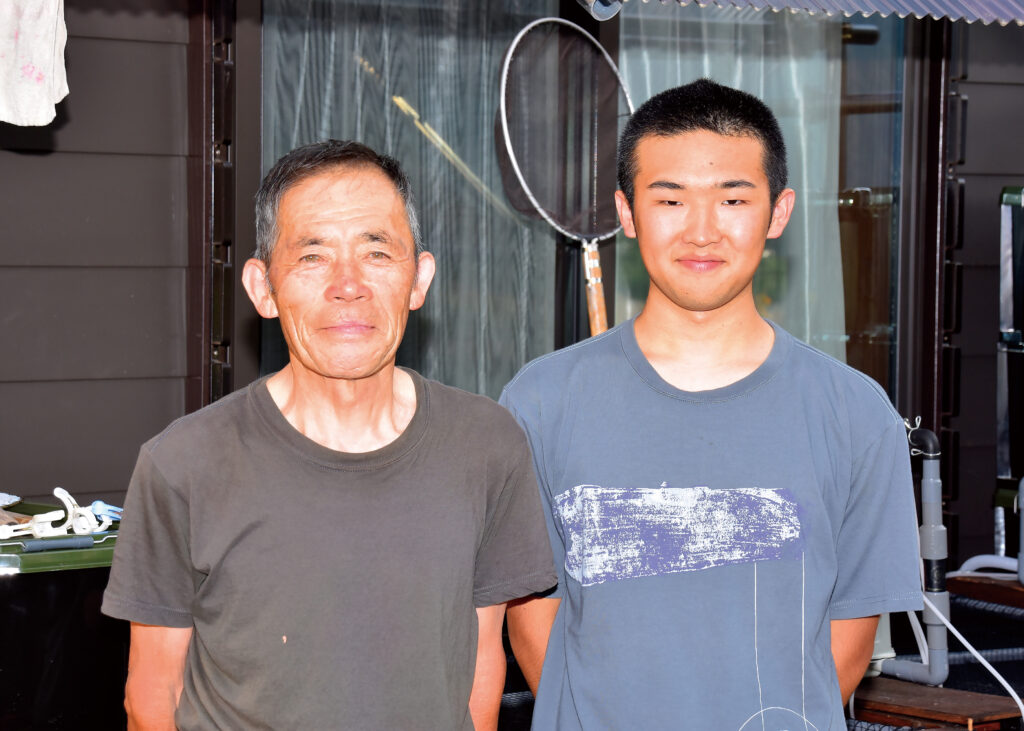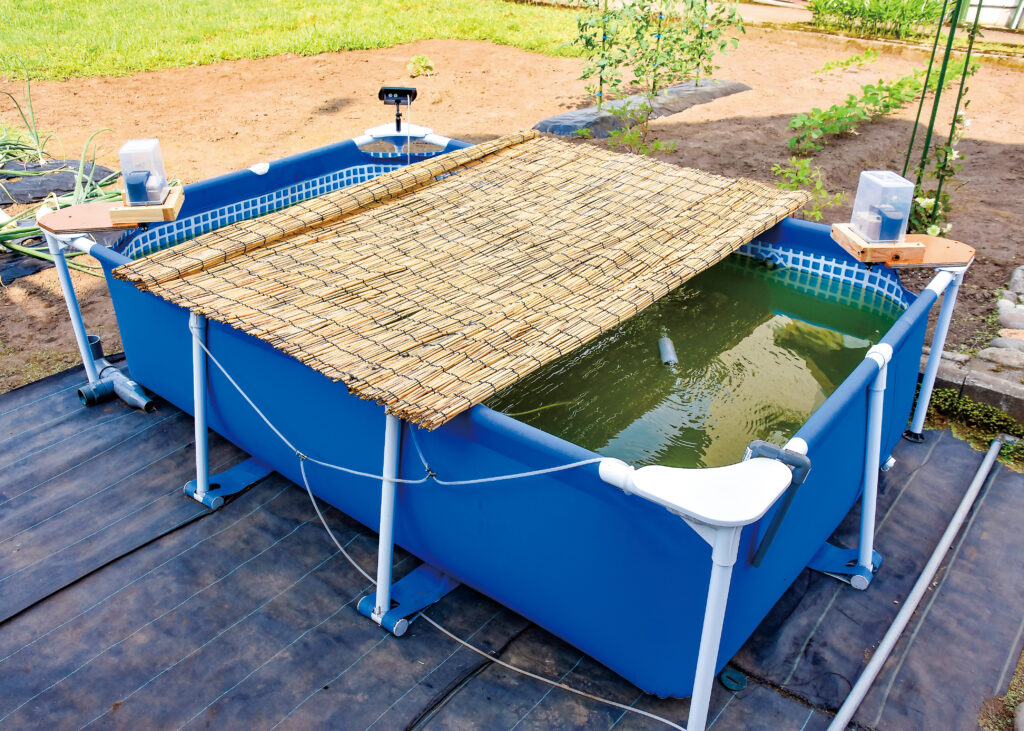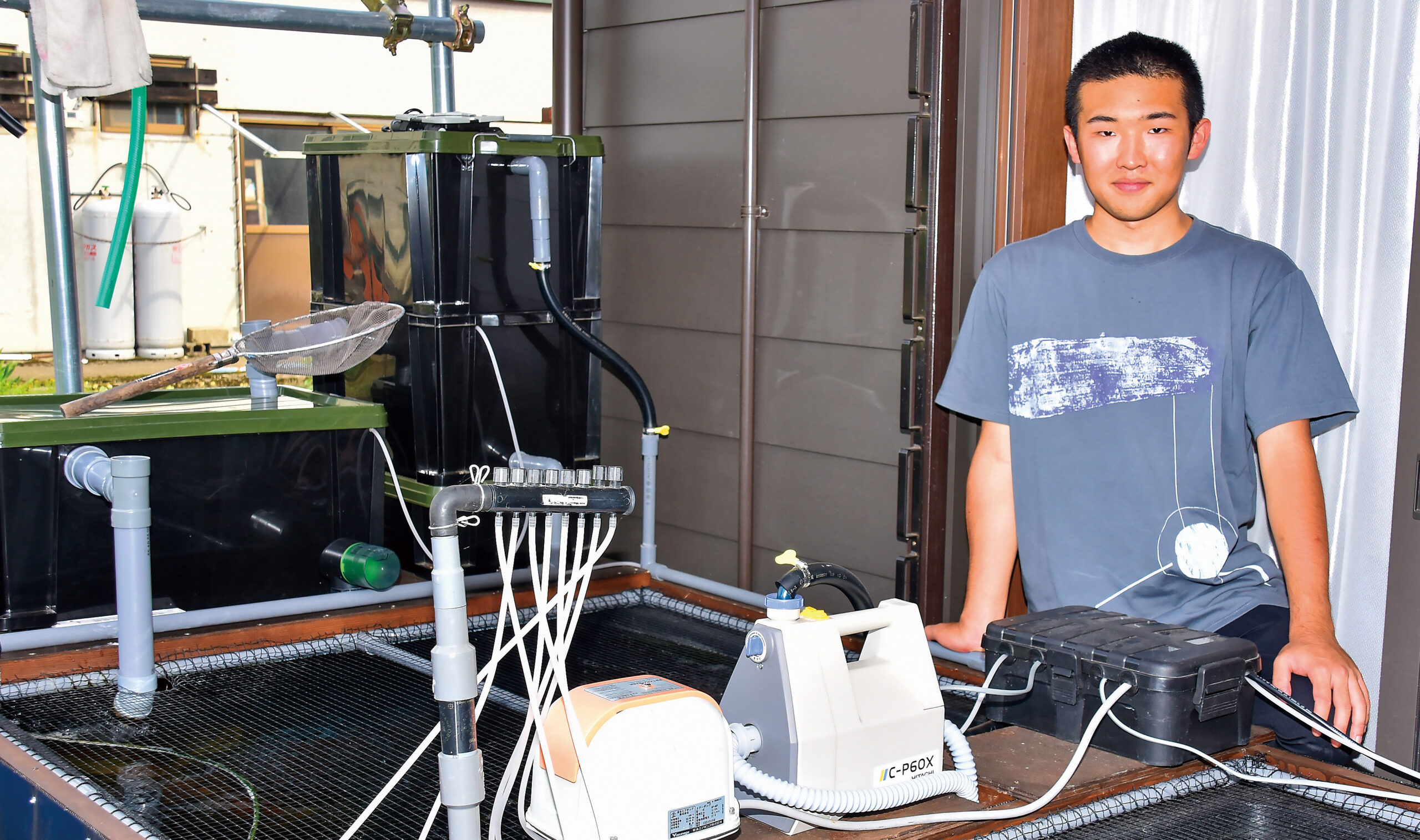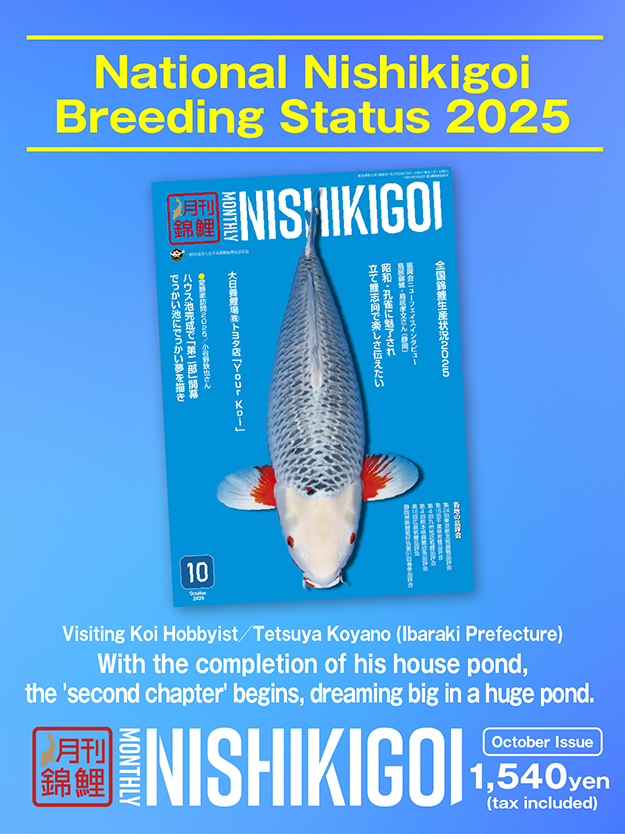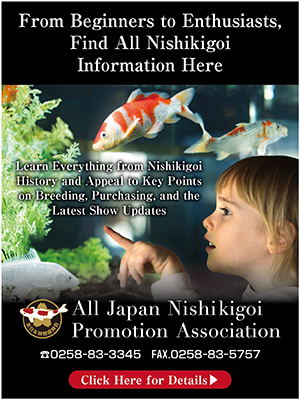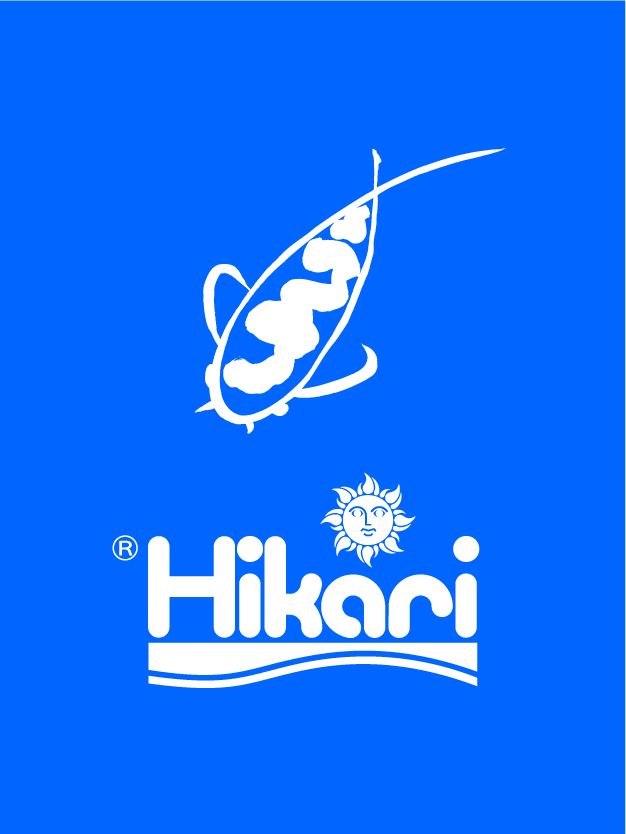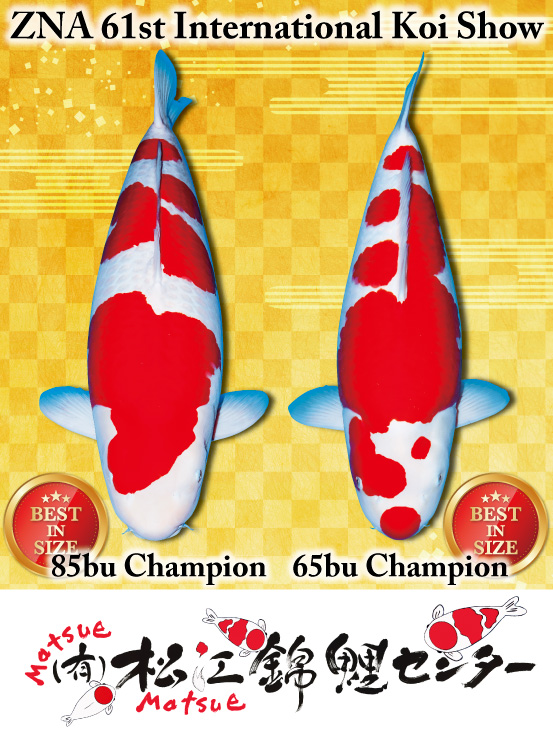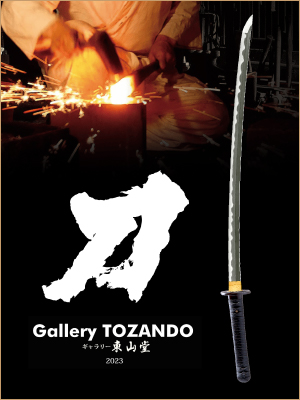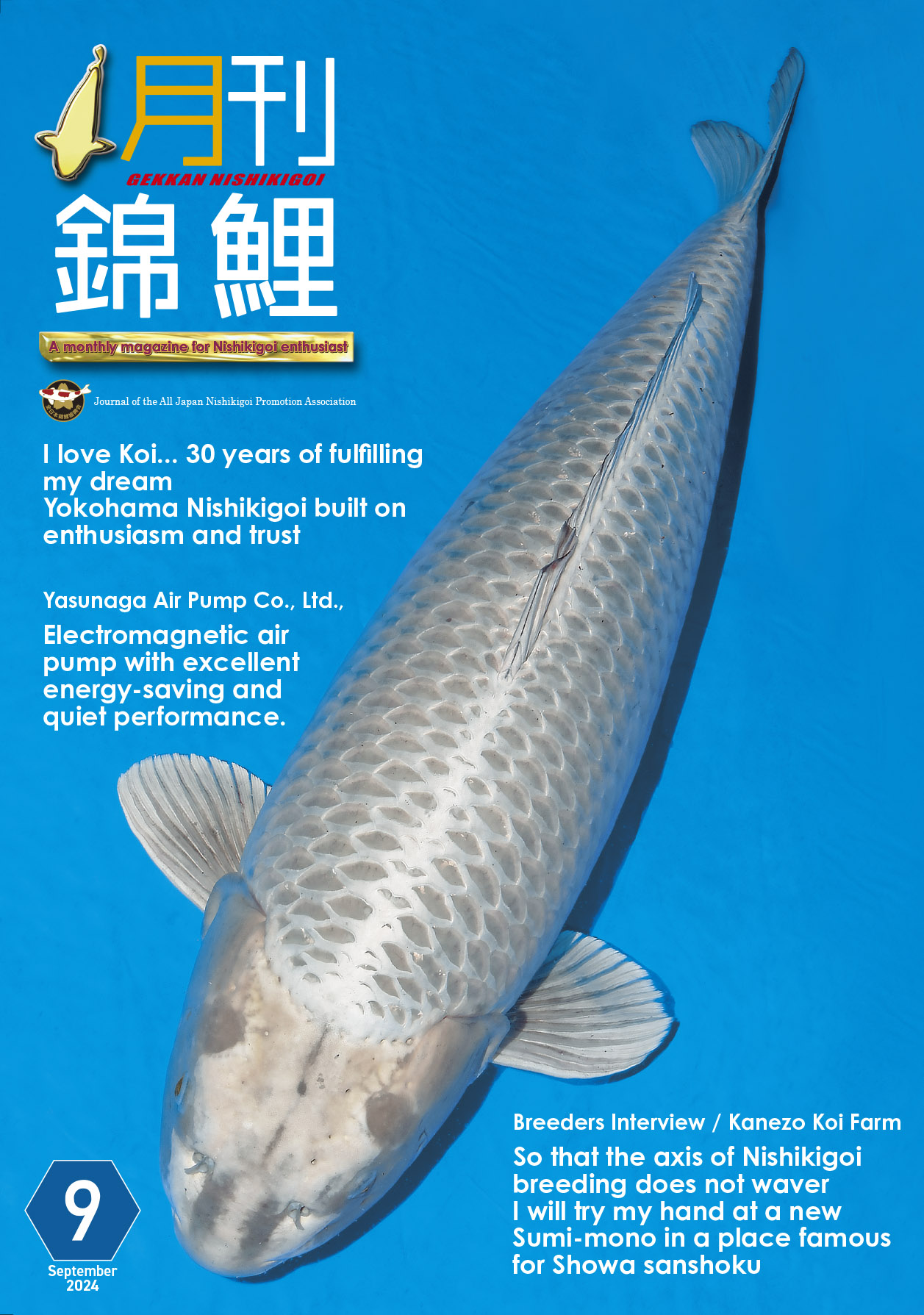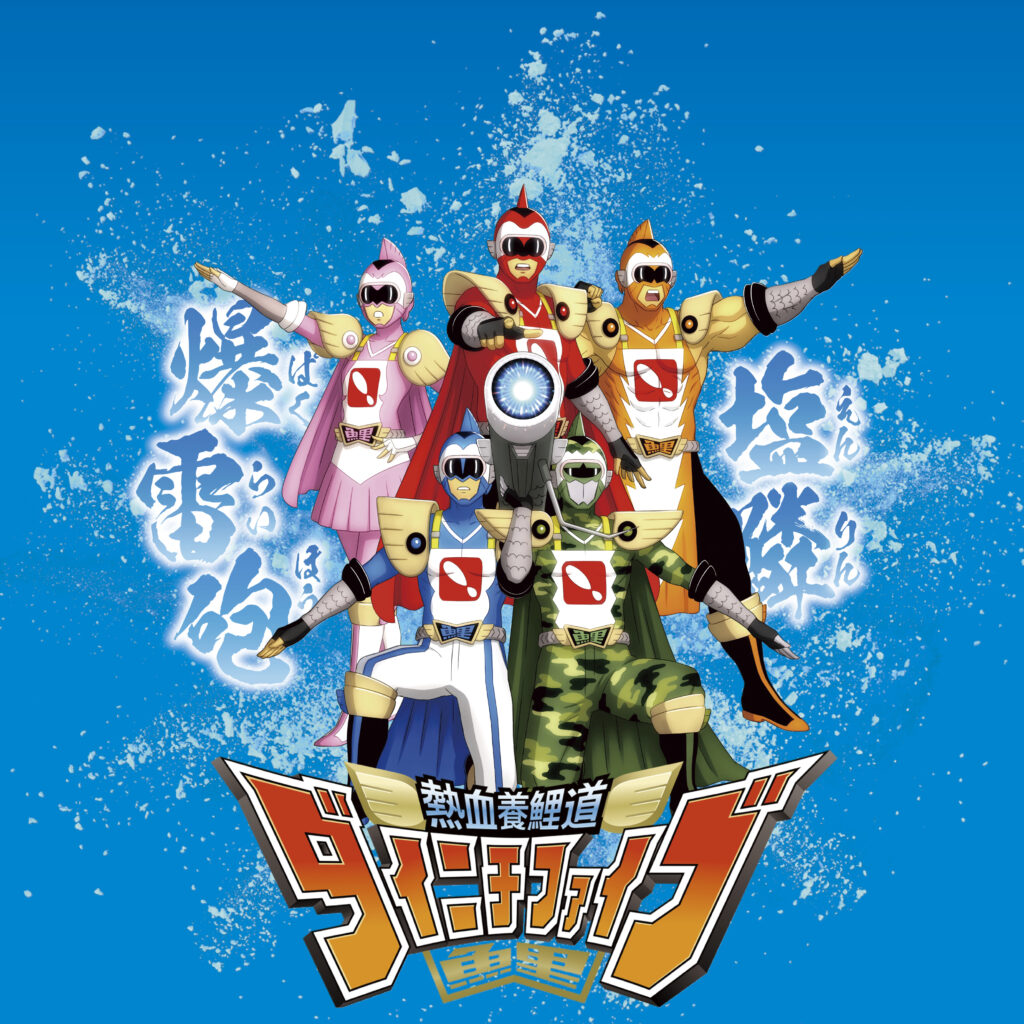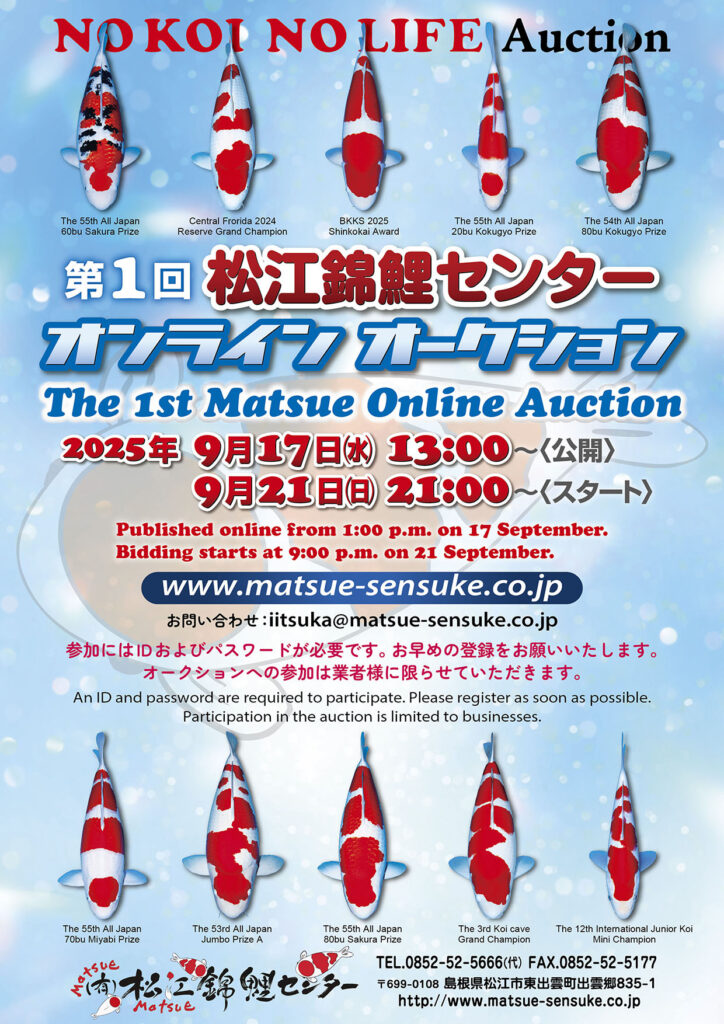Koi hobbyist interview Kota Nozaki (Niigata)
The university student captivated by Sanshoku aspires to become a koi breeder
“Preserving the lineage of local producers for the future”〈Part2〉
It’s rare for our magazine to receive postcards from teenagers, and coupled with the sender’s address being Niigata, we couldn’t help but wonder, “What kind of boy is this…?” Amidst such thoughts, I met Kota Nozaki at a booth during the 12th International Young Koi Show held this year.
“I am renovating the pond during Golden Week.” Two months after hearing those words, on June 21st, I visited Nozaki’s home in Tsunan Town, Nakauonuma District. The neatly organized and cohesive setup behind his house felt like a secret hideaway, reflecting a boyish charm. Beyond his passion for Nishikigoi, his innocent and earnest love for the fish shone through in his unassuming demeanor.
Here, we introduce the tranquil space of Nozaki, who has dreamed of becoming a Nishikigoi breeder since kindergarten.
The charm of production felt close to home
Entering the fourth year of seedling harvesting that started as a playful endeavor
― How long have you been in contact with Mr. Takahashi from Koiwa Koi Farm in the same town?
Nozaki: Koiwa is about a 5-minute drive from here, close enough to reach by bicycle. The connection started when my grandmother’s pond lost all its koi at once. The following year, around 6 or 7 years ago, we went there to buy new black koi—that was the beginning.
― Did you know about Koiwa-san before that?
Nozaki: I didn’t. At one point, I saw a documentary program called “Koibito”, that followed Igarashi Koi Farm in Nagaoka, and I learned that Takahashi-san was managing Igarashi-san’s wild pond. That’s how I found out there was a koi dealer like him in Tsunan. After going there to buy a black koi, I started visiting frequently. While helping with sorting and pond lifting, I became completely captivated by the brilliance of Takahashi-san’s three-colored koi. Before that, I was more into Showa-style koi, but after encountering Takahashi-san’s three-colored ones, I fell in love with them.
― Koiwa-san’s Sanshoku consistently win prize every year at the Nagaoka Show, don’t they? By the way, I heard you also breed your own koi fry. About how long have you been doing that?
Nozaki: I first became interested when I was in elementary school—I played around with raising eggs laid by a black koi in my grandmother’s pond. As for properly breeding Nishikigoi, I only started about three years ago, after moving to my current place.
― What combination are you going with this year? The Sanshoku again?
Nozaki: If I’m going to do it, I want to use my favorite koi. Mr. Takahashi had male and female of the Sanshoku, and there was also a female Shiro Utsuri, so I paired them in two sets. However, the Shiro Utsuri eggs all got moldy and didn’t hatch, so this year, it’ll just be the Sanshoku offspring. For the past three years, I had large Sanshoku parent koi and was raising their fry, but last year, I accidentally killed them due to pH shock from my own carelessness… It was really devastating, and since then, I’ve been even more careful with breeding.
